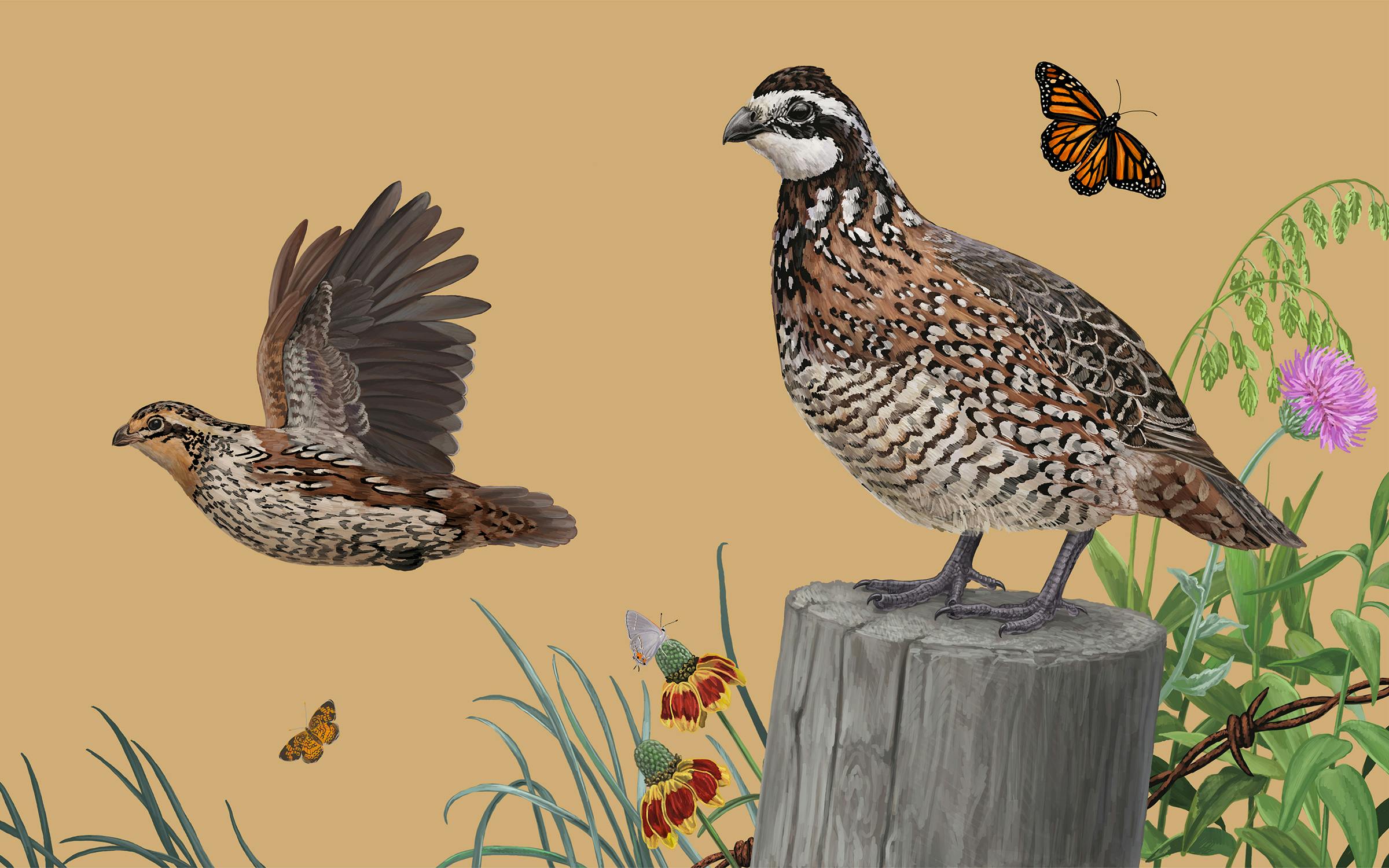Latin Name: Colinus virginianus
Size: Six to seven inches tall
Texas habitat: Open grasslands, shrublands, and prairies
This beloved game bird’s lonesome, high-pitched whistle—“Bob-white! Poor-bob-white!”—marks the turning of the seasons across Texas. During the typical mating period, in April and May, male bobwhite quails often perch on fence posts, the better for the ladies to spot them while they sing. And in late October, hunters celebrate the start of quail season: a time-honored tradition of pacing through tall grass alongside a loyal bird dog, waiting for the moment when a covey of a dozen or so quail flushes, or scatters, in a noisy explosion of feathers. But bobwhites are in serious trouble, having declined by 85 percent across North America since the 1960s. Luckily efforts are underway to save the most iconic of Texas’s four quail species.
What caused the decrease?
Habitat loss, mainly. “Quail need tall grass, and thousands of acres of it,” says Kelly Reyna, director of the Ted and Donna Lyon Center for Gamebird Research at Texas A&M University–Commerce. “But we’re dividing up their habitat like crazy, so we need to take action fast.” Landowners can help by planting native grasses and reducing overgrazing and pesticide spraying.
What’s their lifespan?
Only six months on average. Baby quail are sometimes called bumblebees because they’re such tiny puffballs. Coveys on the ground can form a doughnut shape, with the birds on the outside scouting for danger while those on the inside safely snack on bugs and vegetation.
How are scientists trying to protect them?
Captive breeding has had limited success, because quail reared in pens don’t learn to fear predators and thus are often killed upon release. In 2026 Reyna’s team plans to rear “superquail” that will be trained to avoid predators. “It’s flight school, if you will,” he says. Also, a new medicated feed developed by Texas Tech University’s Ron Kendall kills parasitic worms that can infect quails’ eyes.
What’s courtship like?
During mating season, male bobwhites put on a flamboyant show: he will gorge on insects before running toward the female, Reyna says. “Then he’ll vomit those bugs up for her, like a nice dinner and a date. If she’s interested, she’ll eat some.” Now that’s true love.
This article originally appeared in the October 2024 issue of Texas Monthly with the headline “Bobwhite Quail.” Subscribe today.

